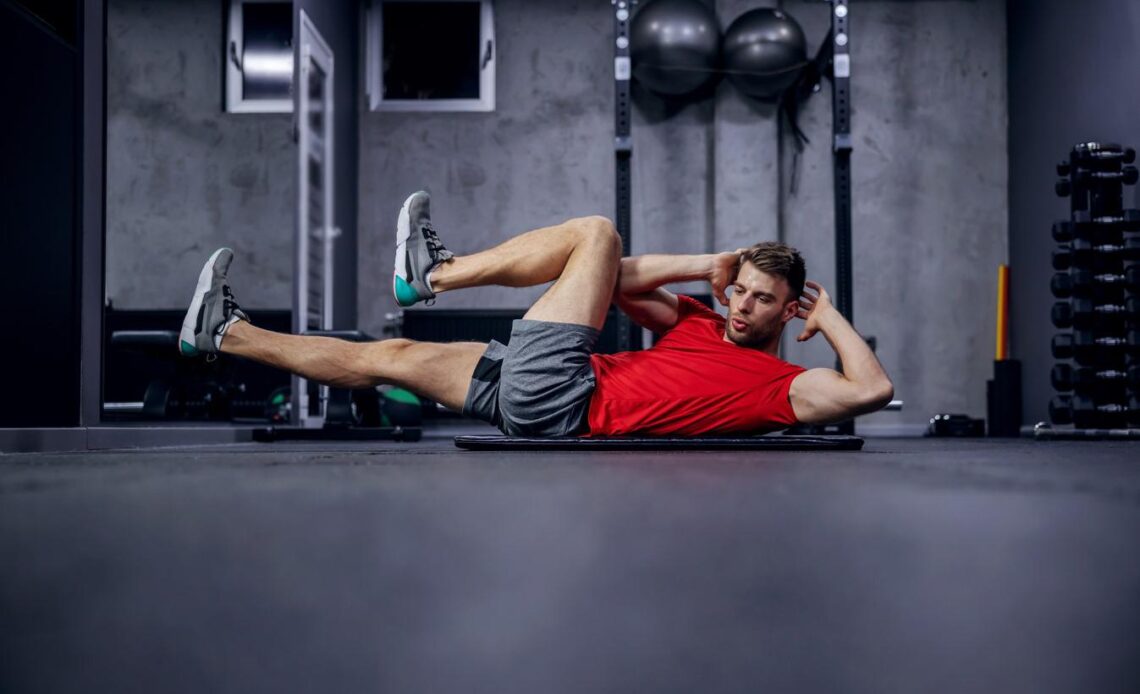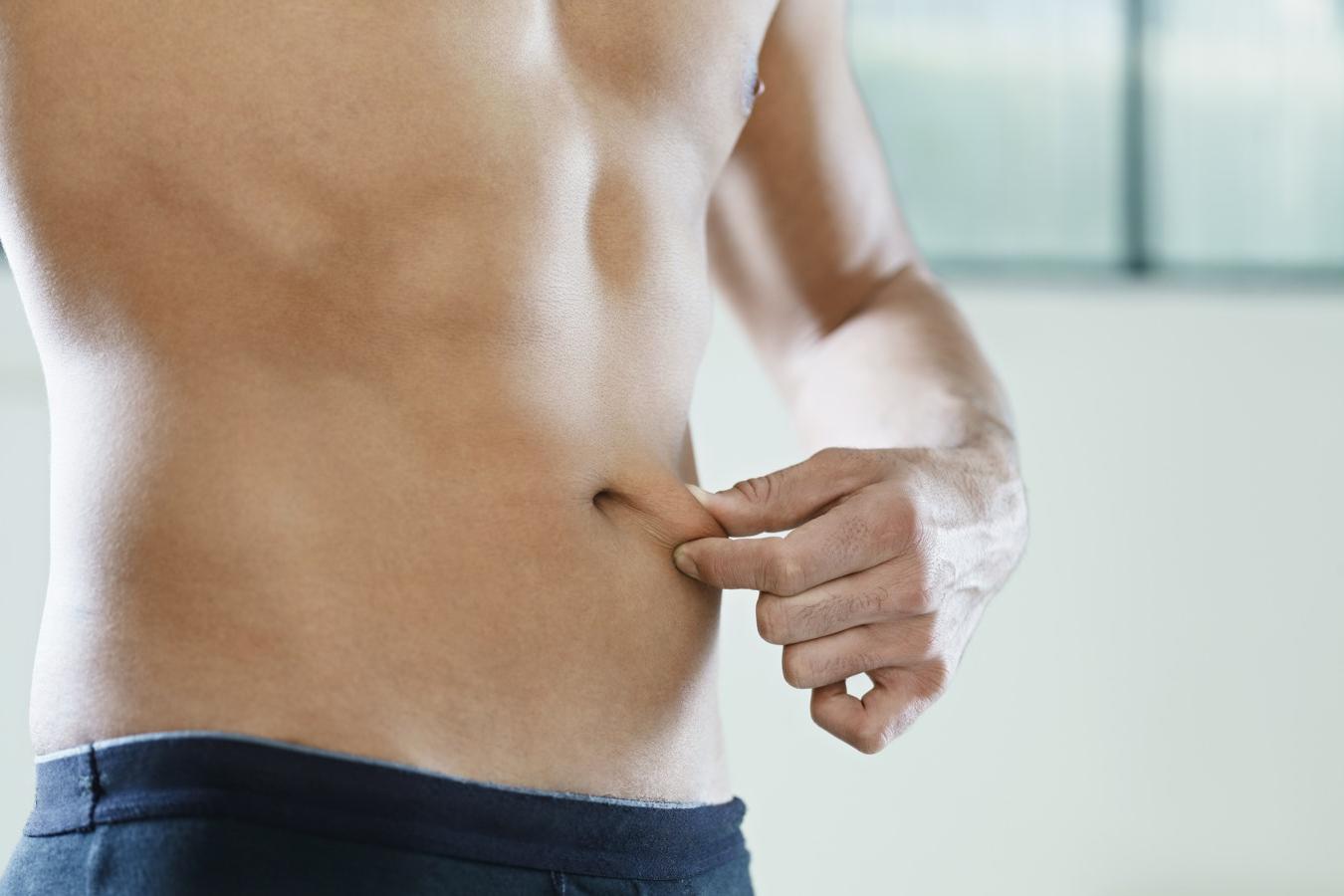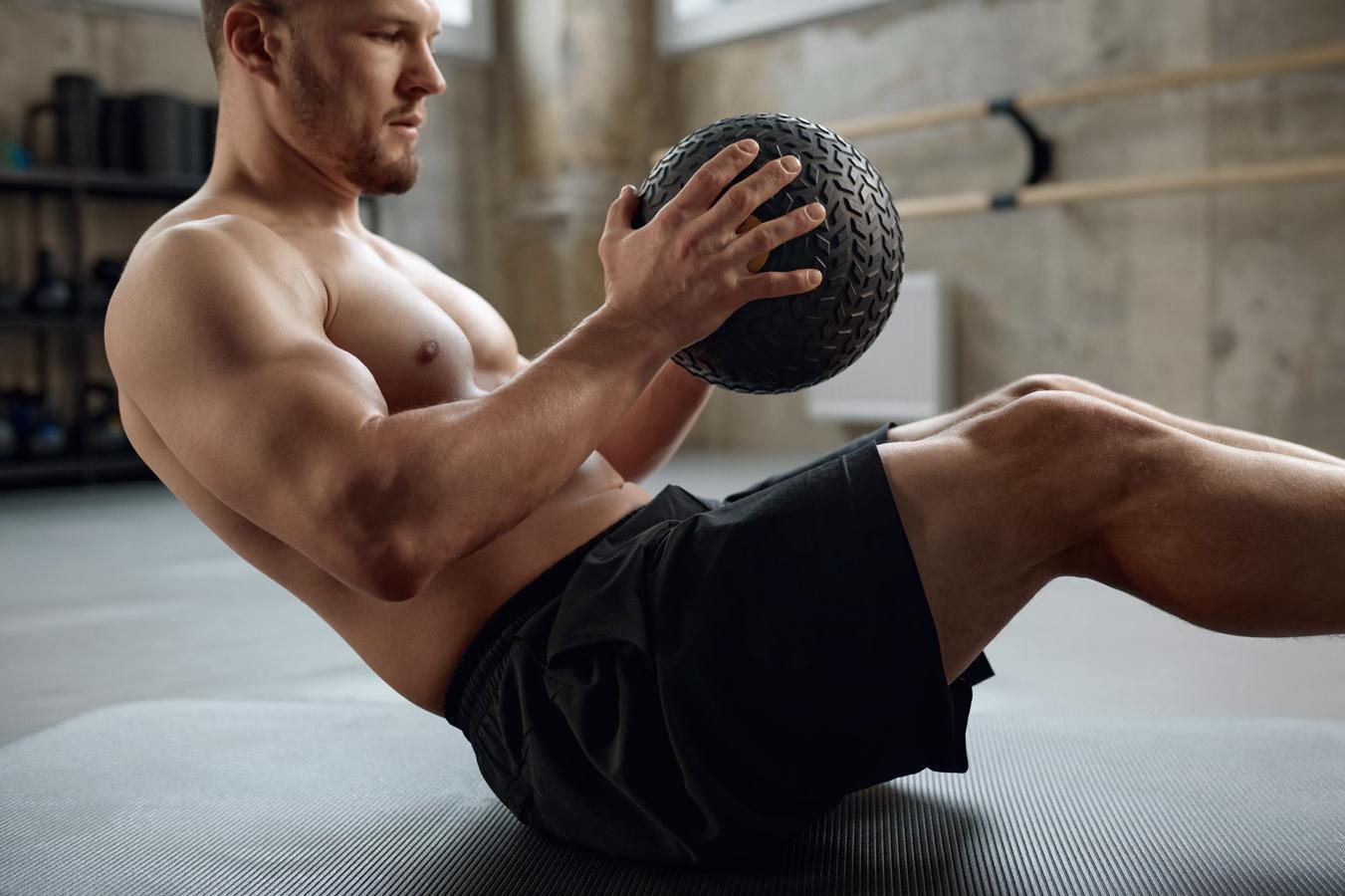
Exercises, nutrition, advice from a doctor and a trainer to get rid of excess belly fat.
- Why does the belly grow?
- How to remove
- Exercises
- Expert commentary
Naira Yakhyaeva, endocrinologist of the BestDoctor group of companies;
Ilya Frank, XFIT master trainer, author of the video in this material.
Why do men's bellies grow?

The belly grows due to subcutaneous and visceral fat. Visceral (abdominal) fat makes up 10-15% of the total body fat (1). It is absolutely natural and is normally present in every healthy person. This fat protects internal organs from mechanical damage, but its excess is harmful to the body. Visceral fat contributes to liver steatosis and liver insulin resistance (2). Substances secreted by internal adipose tissue slow down metabolic processes and disrupt lipid metabolism. The main reasons for the appearance of excess fat in the abdominal area:
- Nutrition. Improper nutrition, abuse of flour, sweet and fatty foods are the most obvious reasons for weight gain.
- Age. Over the years Metabolism slows down and the distribution of fat in the body changes – it accumulates more often in the waist area.
- Digestive disorderswhich impairs the absorption of nutrients.
- Sedentary lifestylelack of physical activity. Excess weight gradually increases when you consume more calories than you burn. Excess calories accumulate as subcutaneous and visceral fat.
- Hormonal imbalancewhich helps increase appetite.
How a man can quickly remove belly fat: 5 tips
In order to get rid of belly fat, you need to build a deficit diet, says Ilya Frank, XFIT master trainer. It involves the correct selection of products and methods of their preparation.
1. Proper nutrition
Try to minimize your consumption of confectionery products, added sugars, fatty fried foods. These products provoke the accumulation of fatty tissue. Add more vegetables to your daily menu: every additional 10 g of fiber they contain reduces the risk of gaining excess weight by 3.7% (3).
Complex carbohydrates in cereals will help you maintain a feeling of satiety for a long time and will give you energy, and protein will help normalize metabolism and accelerate muscle growth. Be sure to drink enough water, not replacing water with juices, tea, and especially sweet carbonated drinks.
2. Giving up bad habits
Research links regular alcohol consumption to risk of abdominal obesity (4). Visceral fat leads to compression of internal organs, deterioration of the body's functioning and a natural decrease in activity, which is why frequent drinkers get into a vicious circle, and the fat on the belly becomes more and more.
The second habit that you can definitely quit for your health and appearance is smoking. A 2024 study found that it is associated with an increase in abdominal fat (5). Considering that alcohol consumption and smoking often go hand in hand (add to this the increased appetite after drinking alcohol), the belly inevitably grows.
3. Strengthening muscles

Often, the waist circumference is formed not so much because of fat, but because of the volume of the abdomen. The reason lies in the weak muscles of the abdominal wall, which do not hold it. In addition, if you eat large portions and do not work on strengthening the muscles, the latter stretch and lose tone. Choose exercises with an emphasis on the transverse muscle – it reduces the volume in the abdominal area and supports the organs in the correct position, acting as a natural corset.
4. Training
Strength training helps you build muscle, and cardio — burn excess calories. Fitness clubs offer the opportunity to select an individual program consisting of the exercises that are most suitable for you. You can alternate exercise machines with cardio training, try functional training and include endurance exercises — general and strength.
5. Sleep and rest regime
One study found that people who regularly sleep less than seven hours have a higher average body mass index and are more likely to be obese than those who sleep more. (6) Sleep deprivation is associated with increased ghrelin levels, salt retention, and inflammatory markers, as well as decreased leptin levels and insulin sensitivity. Lack of sleep increases hunger, which means you’ll eat more than you would if you’d had enough sleep. That’s why it’s especially important to monitor your daily routine and get enough rest.
Exercises to help a man lose belly fat
Ilya Frank shared a selection of exercises that will help men get rid of belly fat.
1. “Burpee” + “Mountain Climber”
Two movements that are combined into a motor complex. Burpee is a functional high-intensity multi-joint exercise. It involves the muscles of the entire body, promotes high energy expenditure. “Mountain climber” is an exercise aimed at activating the abdominal muscles. The benefit of this complex is that it affects the accelerated energy expenditure in a short time interval, while simultaneously working the target muscle group (core). The complex is performed in 45-60 seconds. Rest after – according to the 2:1 scheme (rest time is double the work time).
From a standing position, do a squat and place your hands on the floor. Then throw your legs back and lie on your stomach. Push up and remain in the push-up position. Bend your legs alternately and bring your knees to the same elbow. Then, in the reverse order, return to the starting standing position.
2. Diagonal touch of the hand to the instep from the support
Functional high-intensity multi-joint exercise. Requires high concentration of attention on balance. Engages the muscles of the entire body. In essence, it is similar to the previous one, but due to the change in the position of the body relative to the floor, the muscles work differently. The main movement involves the core muscles. Completed in 45-60 seconds. Rest – 2:1 (rest time is double the work time).
The exercise is performed continuously. Take a sitting position. The pelvis is suspended, but does not sag. Keep it high enough. Stabilizing the body, reach for the left instep with your right hand. Then alternate the work of the arms and legs.
3. V-shaped sit-ups
Exercise for the rectus abdominis muscle. Requires high stabilization of the body at the top point of the lift, which creates additional energy expenditure. When performing the exercise, the abdominal muscles are locally worked out, which makes them stronger and more functional, creating hypertrophy.20-30 repetitions are performed. Rest – 60 seconds.
Start from a supine position. Concentrate your effort and lift your legs and torso up at the same time. The lift should be even to maintain balance in the movement. At the top point, the angle in the hip joint — 90 degrees. Back straight, legs straight. Return to the starting position in the reverse order.
4. “European Twist”
A local exercise for the oblique abdominal muscles. Requires high body stabilization in a sitting position and creates additional energy expenditure. The target muscle group is the oblique systems and lumbar region of the back. The exercise is performed for 30 repetitions alternately in each direction. Rest – 60 seconds.
Starting position: sitting on your buttocks. Legs bent at the knees at an angle of 90 degrees. Back straight. Arms straight in front of the chest. Perform twists of the torso one by one at a moderate pace.
5. Raising the pelvis from a prone position with touching the foot
The exercise requires high control over the neutral position of the pelvis in the starting position. It affects the accelerated energy expenditure in a short time interval, involves the core in volumetric functional work….
